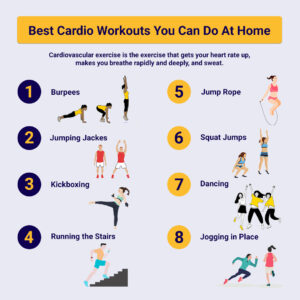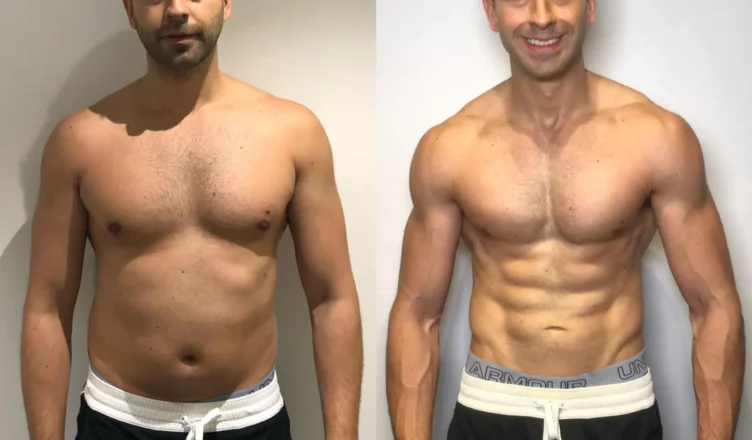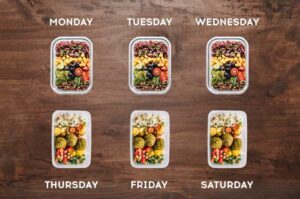How to fat loss ?
Fat loss doesn’t have to be complicated or miserable. If you’re tired of crash diets that don’t work and confusing advice that leaves you frustrated, this guide breaks down the proven strategies that actually deliver results.
This is for anyone ready to lose weight the right way – busy professionals who need simple solutions, fitness beginners overwhelmed by conflicting information, or experienced dieters stuck in a plateau.
We’ll show you how to create a caloric deficit through strategic eating that doesn’t leave you hungry all the time. You’ll also discover how to optimize your exercise routine for maximum fat burn without spending hours at the gym. Finally, we’ll cover how to build sustainable healthy habits that stick long-term, so you never have to start over again.
Create a Caloric Deficit Through Strategic Eating
Your body burns calories every single day just to keep you alive – breathing, pumping blood, digesting food, and maintaining basic functions. This baseline is called your Basal Metabolic Rate (BMR), and it’s the starting point for figuring out how many calories you actually need.
To calculate your total daily energy expenditure, multiply your BMR by an activity factor. Sedentary people use 1.2, lightly active individuals use 1.375, moderately active people use 1.55, and highly active individuals use 1.725. Online calculators can help, but the most accurate approach is tracking your weight and calorie intake for two weeks to see your personal patterns.
Once you know your maintenance calories, subtract 300-500 calories per day for steady fat loss. Going too aggressive backfires – your metabolism slows down, hunger increases, and muscle loss accelerates.
Track food intake to identify hidden calories
Most people drastically underestimate how much they eat. That “small” handful of nuts contains 200 calories. The coffee creamer adds up to 150 calories daily. Cooking oils, salad dressings, and weekend drinks pack hidden calories that sabotage your deficit.
Use a food tracking app for at least two weeks to get real data. Weigh your food when possible – eyeballing portions leads to 20-40% underestimation. Pay special attention to liquid calories, condiments, and mindless snacking.
Don’t obsess over perfect tracking forever, but this initial phase reveals your actual eating patterns and portion distortions.
![]()
Reduce portion sizes without feeling deprived
Smart portion control doesn’t mean tiny, unsatisfying meals. Start by using smaller plates and bowls – the visual trick actually works. Fill half your plate with vegetables, one quarter with protein, and one quarter with carbohydrates.
Eat slowly and put your fork down between bites. Your brain needs 15-20 minutes to register fullness. Drink water before meals to naturally reduce appetite.
When dining out, immediately box half your meal or share entrees. Restaurant portions are typically 2-3 times what you need. Order appetizers as main courses or choose lunch portions for dinner.
Choose nutrient-dense foods over empty calories
Nutrient-dense foods provide vitamins, minerals, fiber, and protein along with calories. Think lean meats, fish, eggs, vegetables, fruits, whole grains, and legumes. These foods keep you satisfied longer and support your metabolism.
Empty calories from processed foods, sugary drinks, and refined carbs leave you hungry and craving more. A 150-calorie apple with fiber and nutrients beats 150 calories of candy every time.
Prioritize protein at every meal – it burns more calories during digestion and preserves muscle mass during weight loss. Aim for 0.7-1 gram per pound of body weight daily. Include healthy fats like avocados, nuts, and olive oil for hormone production and satisfaction.

Optimize Your Exercise Routine for Maximum Fat Burn
Combine strength training with cardio workouts
Building an effective fat loss routine requires both strength training and cardiovascular exercise working together. Strength training builds lean muscle mass, which increases your metabolic rate even when you’re not exercising. Each pound of muscle burns approximately 6-10 calories per day at rest, compared to just 2-3 calories burned by fat tissue.
Start with compound movements like squats, deadlifts, bench press, and rows 2-3 times per week. These exercises work multiple muscle groups simultaneously, creating a higher caloric burn during and after your workout. The afterburn effect, known as excess post-exercise oxygen consumption (EPOC), can keep your metabolism elevated for up to 24 hours following strength training.
Cardio exercises like walking, cycling, swimming, or running directly burn calories during the activity. Moderate-intensity cardio performed for 150-300 minutes per week provides excellent fat-burning benefits. You can schedule cardio on separate days from strength training or combine them in the same session by doing cardio after your weight lifting routine.

Incorporate high-intensity interval training sessions
High-intensity interval training (HIIT) delivers maximum fat-burning results in minimal time. HIIT alternates between short bursts of intense exercise and brief recovery periods, creating a powerful metabolic response that continues burning calories long after your workout ends.
A typical HIIT session might include 30 seconds of all-out effort followed by 90 seconds of active recovery, repeated 8-12 times. Popular HIIT exercises include burpees, mountain climbers, sprint intervals, kettlebell swings, and jump squats. These workouts typically last 15-30 minutes but can burn as many calories as longer, steady-state cardio sessions.
The beauty of HIIT lies in its versatility and time efficiency. You can perform bodyweight HIIT workouts at home, use gym equipment like treadmills or bikes, or create outdoor running intervals. Research shows HIIT can increase fat oxidation and improve insulin sensitivity more effectively than traditional steady-state cardio.
Increase daily movement and activity levels
Non-exercise activity thermogenesis (NEAT) accounts for a significant portion of your daily calorie burn. Small movements throughout the day add up to substantial energy expenditure over time. Simple changes like taking the stairs instead of elevators, parking farther away, or standing while working can increase daily calorie burn by 200-500 calories.
Set reminders to move every hour during sedentary periods. Take short walks during phone calls, do bodyweight exercises during TV commercial breaks, or use a standing desk for part of your workday. Household activities like cleaning, gardening, and cooking also contribute to your daily activity levels.
Track your daily steps using a smartphone or fitness tracker, aiming for 8,000-12,000 steps per day. Weekend activities like hiking, dancing, playing sports, or active hobbies provide enjoyable ways to increase movement without feeling like traditional exercise. The key is making movement a natural part of your lifestyle rather than something you have to force yourself to do.
Build Sustainable Healthy Habits That Last
Establish consistent meal timing patterns
Your body thrives on routine, especially when it comes to eating. Spacing your meals 3-4 hours apart keeps your metabolism steady and prevents the blood sugar rollercoaster that leads to cravings and overeating. Start by eating breakfast within an hour of waking up, then plan your lunch and dinner around your schedule.
Skip the random snacking and aim for 3 balanced meals with 1-2 planned snacks if needed. This pattern helps your body know when to expect fuel, which improves digestion and reduces the chances you’ll grab whatever’s convenient when hunger hits hard.
Weekend meal timing matters just as much as weekdays. Those lazy Sunday brunches at 2 PM followed by late dinners can throw off your entire week’s progress.

Prioritize quality sleep for hormone regulation
Sleep isn’t just rest time – it’s when your body repairs itself and balances the hormones that control hunger and fat storage. Getting 7-9 hours of quality sleep keeps cortisol (stress hormone) in check and maintains proper levels of leptin and ghrelin, which tell your brain when you’re full or hungry.
Poor sleep messes with these signals, making you feel hungry even when you don’t need food. You’ll crave high-calorie, sugary foods because your tired brain wants quick energy.
Create a sleep sanctuary: keep your bedroom cool (65-68°F), dark, and quiet. Put devices away an hour before bed and stick to the same bedtime, even on weekends. Your fat loss goals depend on this more than you might think.
Manage stress levels to prevent emotional eating
Chronic stress triggers cortisol production, which tells your body to store fat, especially around your midsection. Stress also drives emotional eating – you reach for comfort foods when overwhelmed, anxious, or frustrated.
Build stress management into your daily routine with techniques that actually work for you. Deep breathing exercises, short walks, journaling, or even 10 minutes of stretching can reset your nervous system. Regular exercise also burns off stress hormones naturally.
Identify your stress eating triggers. Do you raid the pantry after difficult work meetings? Keep healthy options ready and practice the pause – wait 10 minutes before eating when stressed to see if you’re actually hungry.

Stay hydrated throughout the day
Water supports every aspect of fat loss. It helps break down stored fat, reduces false hunger signals (thirst often masquerades as hunger), and keeps your metabolism running efficiently. Drinking water before meals can help you eat appropriate portions without feeling deprived.
Aim for half your body weight in ounces daily, plus extra if you exercise or live in a hot climate. Start each day with a glass of water and keep a bottle nearby as a visual reminder.
Don’t wait until you feel thirsty – by then you’re already dehydrated. Set hourly reminders if needed, and remember that herbal teas and sparkling water count toward your daily intake.

Plan meals and snacks in advance
Meal planning removes decision fatigue and prevents impulsive food choices that derail your progress. Spend 15-20 minutes each week mapping out your meals and creating a shopping list based on what you’ve planned.
Prep ingredients on weekends: wash and chop vegetables, cook grains in batches, and portion out snacks. Having healthy options ready makes it easier to stick to your goals when life gets busy.
Keep backup options available for hectic days – frozen vegetables, pre-cooked proteins, and simple meal combinations that require minimal preparation. Planning doesn’t mean everything has to be complicated; simple, nutritious meals work just as well as elaborate ones.
Fat loss really comes down to mastering the basics: eating in a way that creates a caloric deficit, exercising smart to maximize your fat-burning potential, and building habits you can actually stick with long-term. The key is avoiding the common traps that derail most people’s progress and staying flexible enough to adjust your approach when you hit those inevitable plateaus.
Start tracking your food and workouts today, even if it’s just for a week. You’ll be amazed at what you discover about your current habits, and that awareness alone will put you miles ahead of where you are now. Remember, sustainable fat loss isn’t about perfection – it’s about consistency and making small improvements that add up to big results over time.

